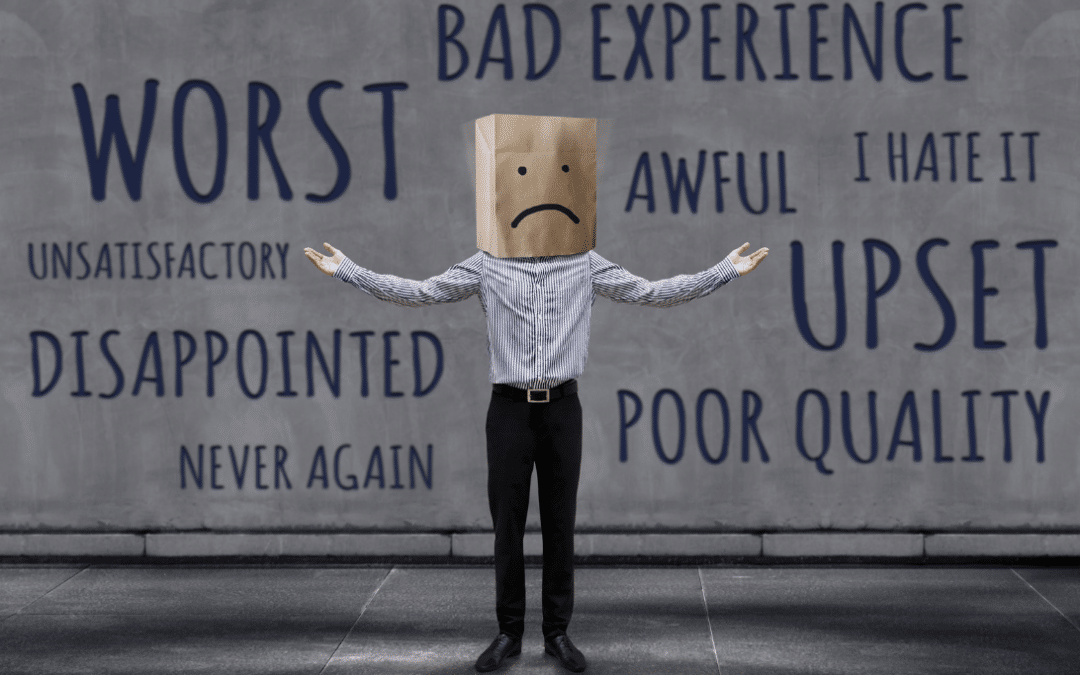How do you deal with negative feedback on social media? Do you ignore it, delete it or respond to it? If you’re a brand that wants to build a strong relationship with your customers, you can’t afford to overlook negative feedback. In fact, you can use it as an opportunity to strengthen your brand!
Social media is a different kind of marketplace. You need to connect with your audience and earn their trust before you can sell anything. However, social media also comes with a downside: you may face negative comments, unhappy customers and trolls. How you handle these situations can have a big impact on your brand image. In this article, we share tips on how to turn negative social media feedback into opportunities to strengthen your brand and increase customer loyalty.
The Importance Of Online Reputation Management
Taking care of your brand’s reputation has always been at the heart of running any successful business. It is all about how the public perceives a brand. Maintaining a positive image is crucial, as it can make or break a company.
A great online reputation means having a partnership with current and prospective customers. Factors such as the nature of the business, customer service and content visibility can influence what your audience thinks of you on the internet. Regular monitoring of online reputation allows companies to avoid losing new leads and sales.
Let’s dive into some salient points:
1. 85% of consumers trust online reviews as much as personal recommendations
Consumers value the opinions of other customers who have used a product or service before them. Online reviews are a form of social proof that can influence the trust and credibility of a brand.
2. Negative reviews can make 60% of consumers not want to use a business
Online ratings can have a significant impact on your revenue. They are a form of social validation that can influence the purchase decisions of consumers. A higher rating can indicate better quality, satisfaction and value.
3. Only 5% of people look past the first page of Google
Ranking high on Google is crucial for your online visibility and standing. Most people do not bother to scroll down or click on the next page when they search for something online. They tend to choose the results that appear on the first page, which are perceived as more relevant and authoritative.
4. Only 5% of people look past the first page of Google
Negative feedback can have a detrimental effect on your business. Bad reviews can damage your reputation, lower your rating and discourage potential customers from choosing your business.
As a business, you must devote resources to online reputation management to avoid damaging your brand. With an effective reputation management strategy, you can build the brand image you want and generate smart insights on ways you can increase awareness of your business.
What Is Negative Feedback?
Negative social media feedback refers to any comments, reviews or mentions of a brand that give a poor perception of the business. It can come in various forms, such as complaints about a product or service, or bad reviews left on social media platforms and review sites.

The public nature of these comments makes them more visible to potential customers and can lead to a reduction in trust and sales. Today, many consumers use social media to evaluate companies before making a purchase. Brands that ignore negative feedback may risk further damage to their reputation, while those that engage with unhappy customers in a sincere and timely manner can turn negative feedback into an opportunity for strengthening brand reputation.
Types Of Negative Feedback In Social Media
Adverse feedback on social media can come in many forms, often shaped by the nature of the platform and the kind of interaction possible.
1. Comments: Users might leave undesirable comments on posts, profiles or in direct response to other comments. This is perhaps the most direct form of negative feedback.
2. Dislikes Or Downvotes: Some platforms allow users to express their dislike for content through a specific reaction, like a ‘dislike’ button on YouTube or downvotes on Reddit.
3. Poor Reviews Or Ratings: Platforms like Yelp or Google Reviews allow users to rate businesses and provide reviews. Bad reviews can significantly impact a company’s online reputation.
4. Unfollows Or Unsubscribes: Though less visible, when a user chooses to unfollow a profile or unsubscribe from updates, it can be a sign of their bad experience.
5. Adverse Reactions: Platforms like Facebook have expanded beyond likes to include a range of reactions. Users can respond to a post with “Angry” or “Sad” emoticons as a form of negative feedback.
6. Unsupportive Shares Or Retweets: Users might share a post to their own followers with a dissenting comment attached, amplifying the negative sentiment.
7. Reporting Or Flagging Content: Users can report or flag posts they believe violate platform guidelines. While this is often used for inappropriate or harmful content, some people use it as a way to express severe disapproval.
8. Private/Direct Messages: Sometimes, users send criticisms through direct messages.
9. Trolls And Cyberbullying: While not a legitimate form of criticism, some destructive feedback may come in the form of trolls or cyberbullying, where individuals make harmful or disruptive comments with the intent to upset or provoke.
10. Ghosting Or Ignoring: Not engaging at all can be a form of adverse feedback, particularly for influencers or brands that measure their success based on engagement rates.

Why Do Businesses Get Negative Feedback On Social Media?
It’s important to note that social media reviews should be approached with discernment, as not all negative feedback is necessarily valid or reflective of the overall quality of a business. Nevertheless, understanding the reasons behind negative reviews can help you take proactive steps to enhance your online reputation.
1. Poor Quality Of Product Or Service: If a customer is dissatisfied with the quality of a product or service, they may choose to express their disappointment online, particularly on platforms like Yelp or Google Reviews.
2. Bad Customer Service: Negative experiences with customer service can insight unhappy comments or reviews. Some catalysts include unresponsiveness, rudeness or ineffective assistance.
3. Disagreement With Opinions Or Beliefs: Social media is a platform for expression, and not everyone will agree with the opinions or beliefs expressed by an individual or organization. Such disagreements sometimes lead to undesirable feedback.
4. Inappropriate Or Offensive Content: If a post includes content that is seen as offensive, inappropriate or insensitive, it’s likely to receive dissenting opinions.
5. Misleading Information Or False Advertising: If a business provides misleading information or false advertising, users might feel compelled to warn others of their experiences.
6. Over-Promotion: Too much self-promotion or “spammy” behavior can turn followers off and lead to unenthusiastic feedback, unfollows or even reports.
7. Political Or Social Issues: Depending on the social or political climate, certain posts or stances might make those with opposing views reactive.
8. Technical Problems: If users encounter technical problems on a platform or with a service connected to your business, they might share their displeasure with the experience.
9. Bad Publicity Or Scandals: If a company or individual is involved in a scandal, this can result in a flood of aggressive comments or ratings on their social media profiles.
10. Trolls and Cyberbullies: Some individuals intentionally post harmful comments to provoke a response or to simply cause disruption.
Remember, although poor feedback can be tough to handle, it can also provide valuable insights for improvement. Handling criticism professionally and addressing issues effectively can also enhance your brand reputation.
How To Identify The Sources Of Negative Feedback
While adverse responses on social media serve as one of the hardest challenges when running a business, it can also be an opportunity to learn from your customers, improve your products or services and build trust and loyalty. The key is to identify the source and respond appropriately.
There are different sources of bad feedback on social media, such as:
- Dissatisfied Customers: These are clients who have purchased your product or service and are unhappy with the quality, performance, delivery or offerings. They may express their dissatisfaction publicly on social media platforms, review sites, blogs or forums.
- Competitors: These are businesses or individuals who offer similar products or services as you and are trying to gain an advantage over your business. They may post negative comments or reviews about your brand to discredit you, mislead your customers or steal your market share.
- Trolls: These are individuals who have no genuine interest in your product or service and instead seek attention or amusement.
By actively identifying between genuine feedback and the motivations behind negative reviews, you can gain valuable insights into the specific areas and strategies of your business that need improvement. To identify the sources of feedback on social media, you can use various tools and techniques, such as:
- Social Media Monitoring: This involves using software or platforms to track and analyze what people are saying about your brand on social media channels. You can use keywords, hashtags, mentions, tags or filters to find relevant conversations and comments. You can also use sentiment analysis to measure the tone and emotion of the feedback.
Here are our top three favorite social media monitoring tools you can use to streamline the process:
1. Hootsuite: This tool is easy to use because it has a user-friendly interface and can easily be integrated with your social media platforms. Hootsuite lets you manage multiple social media accounts from one dashboard. You can schedule posts, monitor conversations, analyze performance and collaborate with your team.
2. Metricool: This tool provides comprehensive analytics and reporting tools, enabling you to track key performance metrics such as audience growth, engagement rates and reach. Metricool’s competitor analysis feature provides valuable insights into the strategies and performance of rival brands.
3. Buzzsumo: BuzzSumo stands out for its content discovery and influencer identification capabilities. It helps users find popular and trending content, analyze competitors’ strategies and identify influential individuals for collaborations. One of its most unique features is real-time social listening, which enables users to monitor brand mentions and industry-specific topics across social media platforms.
- Review Analysis: This involves using software or platforms to collect and analyze reviews from various sites. For example, as a social media marketing agency in Washington State, Three Girls Media uses Google My Business and Yelp. For our clients, depending on the nature of their business, we add Trustpilot or Amazon. You can use ratings, keywords, categories or filters to find relevant reviews and comments.
- Customer Feedback Surveys: This involves using software or platforms to create and send surveys to your customers via email, SMS, web or social media. You can use questions, scales, ratings or open-ended responses to gather feedback from your customers.
How To Turn Negative Feedbacks Into Positive Outcomes
Navigating social media as a business is like an adventure. There’ll be highs and lows, clear skies and storms. Negative feedback is just a part of the journey, and it’s not always a bad thing. It’s honest, direct and informative. Here are some effective methods on how to transform unhappy customers comments into positive outcomes:

1. Listen And Understand: Understand the complaint or issue being raised. This will help you respond effectively and make necessary changes. Remember, not all poor feedback is constructive, but when it is, it can be very valuable.
2. Respond Promptly And Professionally: Address the issue as quickly as possible, showing that you value the user’s input and are willing to take action. Ensure your response is respectful, thoughtful and professional, regardless of the tone of their comments.
3. Acknowledge Mistakes: If the review is due to a mistake or oversight, own up to it. An honest admission can earn respect and show transparency, which can enhance your reputation.
4. Take The Conversation Offline: Sometimes, negative feedback can be too complex, sensitive or personal to be resolved publicly on social media. In such cases, you should invite the customer to contact you privately via email, phone or direct message, where you can address their concerns more effectively and confidentially.
5. Offer Solutions And Freebies: Where possible, offer a solution to the problem or explain how you plan to address the issue. This demonstrates commitment to customer satisfaction and continuous improvement. Depending on the nature and severity of the issue, you can offer a refund, a replacement, a discount, a freebie or any other gesture that can make up for their bad experience. You should also explain how you will prevent the issue from happening again in the future.
6. Take Action: Implement the necessary changes to avoid repeating the same mistakes. This might involve modifying your product or service, changing your communication approach or improving your customer service processes.
7. Follow-Up: If appropriate, reach out to the individual who provided the feedback to let them know what changes you’ve made as a result of their comment. This not only shows you value their input, but also that you take action based on user feedback.
8. Promote Positive Experiences: Encourage satisfied customers to share their good experiences. This balances out negative feedback and demonstrates you are actively improving.
9. Create A Feedback Loop: Regularly ask for input from your audience members. This shows you value their opinions, and it also helps you stay proactive about identifying and addressing issues.
10. Build A Positive Online Community: Foster an online environment that encourages positive interaction and engagement. The more positive your community, the less impactful isolated negative feedback may be.
Remember, everyone makes mistakes, and no brand or individual is immune to criticism. It’s how you handle and learn from that criticism that can set you apart. Negative feedback can be a stepping stone to creating a better user experience and a stronger online presence.

Final Thoughts:
Negative feedback on social media is not something to fear or avoid. It’s an opportunity for brands to strengthen their reputation and should be approached with a proactive mindset. By addressing and resolving the issues promptly, brands can turn setbacks into advantages and fortify their reputation in the long term. The key lies in being honest, transparent and community minded.
If you need help in managing your social media better, reach out to Three Girls Media, Inc. We are a social media marketing agency in Washington State and can help your business’ reputation grow, feel free to contact us at 408-218-2391, or email us at info@threegirlsmedia.com.
Special Offer:
Sign up for a complimentary consultation during March and receive a Social Media Management Guide valued at $475! We offer a 30-minute phone consultation with our CEO and can answer your questions and discuss your specific marketing needs – no strings attached. Call 408-218-2391 or contact us today to arrange your consultation!

